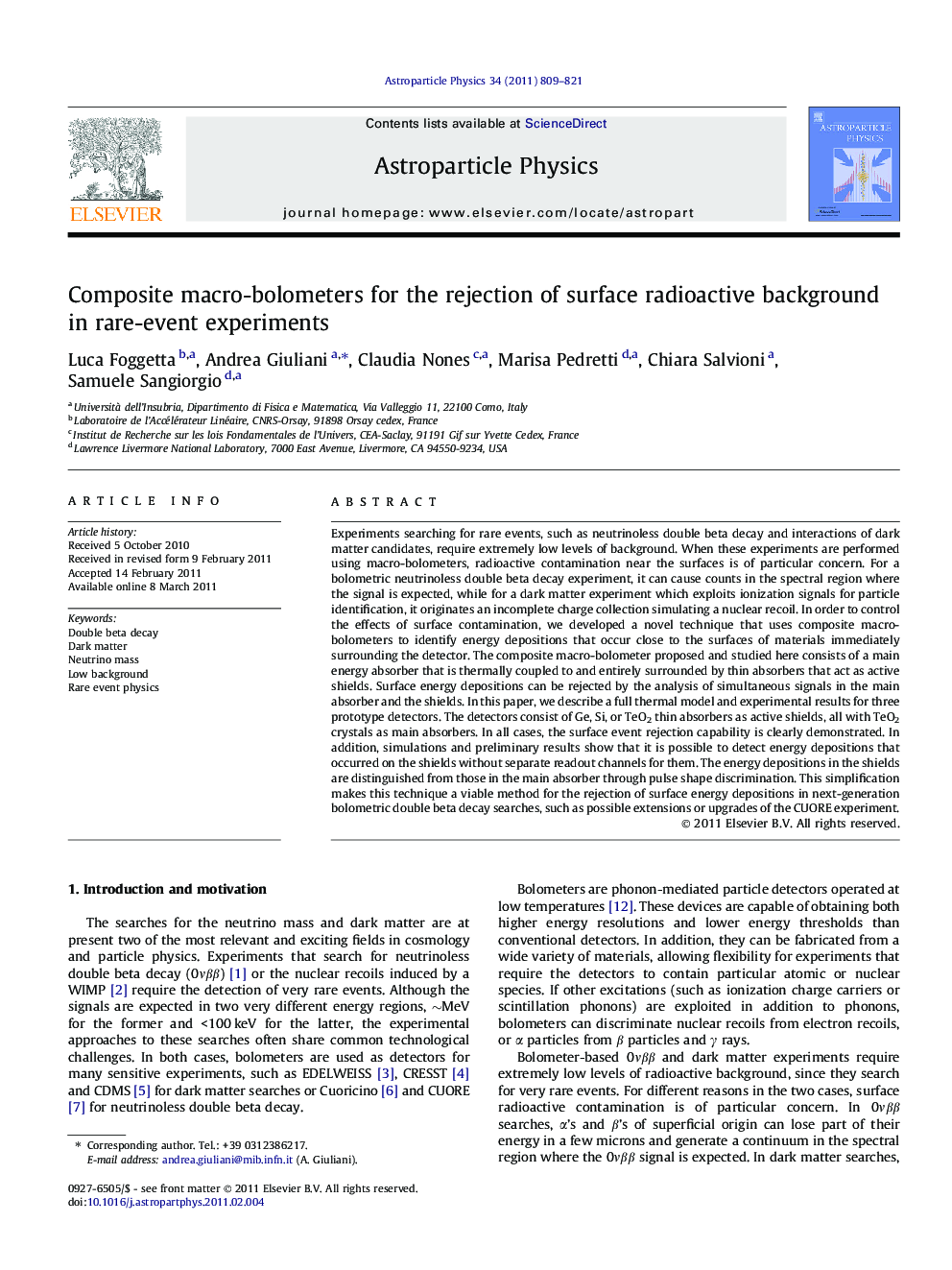| Article ID | Journal | Published Year | Pages | File Type |
|---|---|---|---|---|
| 1771038 | Astroparticle Physics | 2011 | 13 Pages |
Experiments searching for rare events, such as neutrinoless double beta decay and interactions of dark matter candidates, require extremely low levels of background. When these experiments are performed using macro-bolometers, radioactive contamination near the surfaces is of particular concern. For a bolometric neutrinoless double beta decay experiment, it can cause counts in the spectral region where the signal is expected, while for a dark matter experiment which exploits ionization signals for particle identification, it originates an incomplete charge collection simulating a nuclear recoil. In order to control the effects of surface contamination, we developed a novel technique that uses composite macro-bolometers to identify energy depositions that occur close to the surfaces of materials immediately surrounding the detector. The composite macro-bolometer proposed and studied here consists of a main energy absorber that is thermally coupled to and entirely surrounded by thin absorbers that act as active shields. Surface energy depositions can be rejected by the analysis of simultaneous signals in the main absorber and the shields. In this paper, we describe a full thermal model and experimental results for three prototype detectors. The detectors consist of Ge, Si, or TeO2 thin absorbers as active shields, all with TeO2 crystals as main absorbers. In all cases, the surface event rejection capability is clearly demonstrated. In addition, simulations and preliminary results show that it is possible to detect energy depositions that occurred on the shields without separate readout channels for them. The energy depositions in the shields are distinguished from those in the main absorber through pulse shape discrimination. This simplification makes this technique a viable method for the rejection of surface energy depositions in next-generation bolometric double beta decay searches, such as possible extensions or upgrades of the CUORE experiment.
